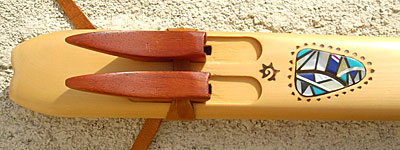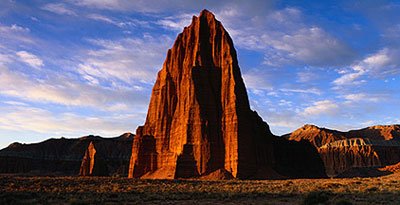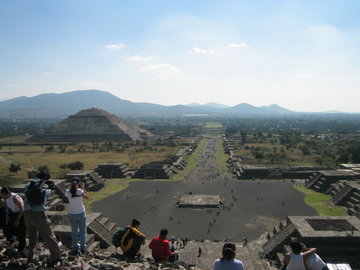
Many of the best Native American flute makers I know live in Arizona. We've looked at flutes from two of these: Michael Gulino and Pat Haran. In this post we’re going to look a third, JP Gomez. I only recently got a few flutes by him, after I had finished New Fire, so I haven't released any recordings using his flutes, yet. However, once I got a few I've begun to play his flutes frequently during my live performances and have done some recording with them as well.
The F# flute
The flute I've choosen for this post is an F# made of walnut from his Concert flute series. It has very clean lines, but closer inspection reveals some wonderful little touches.
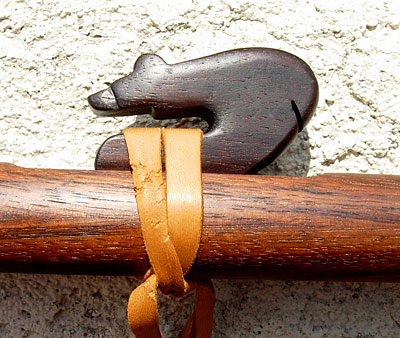
The flute made from walnut with a black walnut block, lace wood tips and maple bands. It is 25" long and has a 7/8" bore. This is a larger bore than most F# flutes, but I really like the clean sound that this produces. I can punch them with a hard attack and they almost never over-blow or squeak. Is this just a by-product of the larger bore? I'm not sure.
Details
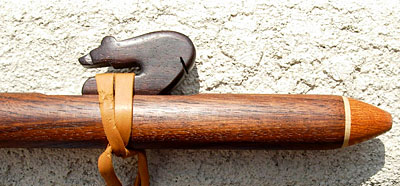
JP pays close attention to detail in his craftmanship. One of the things that he has told me he really pays attention to is the matching of the two pieces of wood that make up his flutes. This is the seam where the top and bottom pieces are joined together. He wants it to be very hard to see on his instruments, as if it wasn't there. He also does some very beautiful inlay work on some of his flutes, which we will look at in a later post.
Mouthpiece and End cap

Another very nice touch on this flute can be found on the mouthpiece and end cap. These are both made from Lacewood, from Australia, which gets it's name from the lace like pattern, or rays, in the grain. This pattern is only visible when the wood is cut a certain way. JP has placed his mouthpiece and end cap so that the lace pattern faces the top of the flute. The side that the player and audience sees the most.
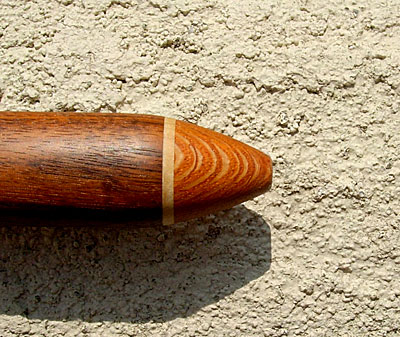
The mouthpiece is espcially nice as the rays in the grain seem to arc in layers as the wood tapers toward the end as can be seen in the photo above. A subtle touch, but one which I really enjoy.
The Sounds
This flute, has a lovely warm, woody classic Native American sound. There is a is a slightly hollow quality to it as well.
Listen to this flute
From the Player's POV
JP's flutes are very easy to play. Like all the flutes we've looked at so far, the finger holes are comfortably spaced and well laid out. The flute is very well tuned and does not require very much change in breath pressure when moving from low to high pitches.
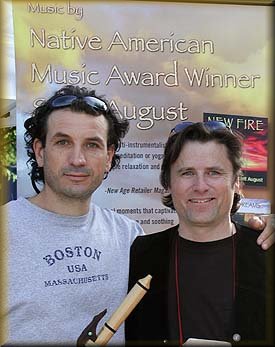
With JP Gomez in Sedona, AZ.
JP lives in Sedona where he first heard the NAF. He has been making flutes for a long time and I'm sure we'll talk about him more in this blog. To find out more information about JP and other flute makers check out the Flute Makers page on my web site.
If you want to read more posts about other Native American flute makers visit my Blog index.
More information
For a more detail look at the construction of the Native American flute read the History and Construction article on www.cedarmesa.com.
Comments
Let me know if you enjoyed this post. Leave a comment below.
Do you have a flute by any of the Makers we looked at so far? Let me know what you think of it.
Scott August


